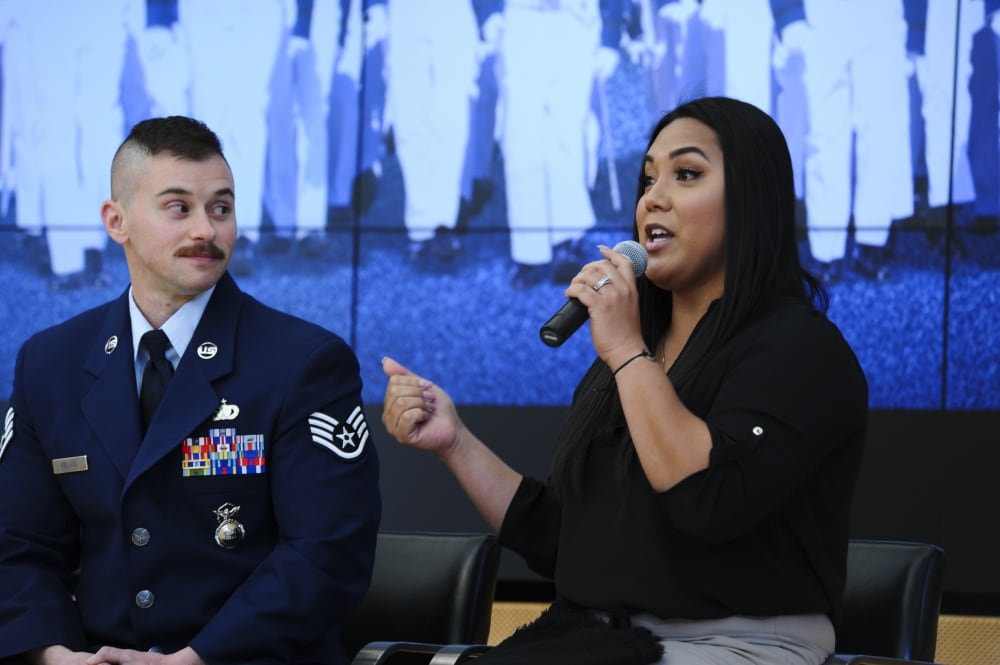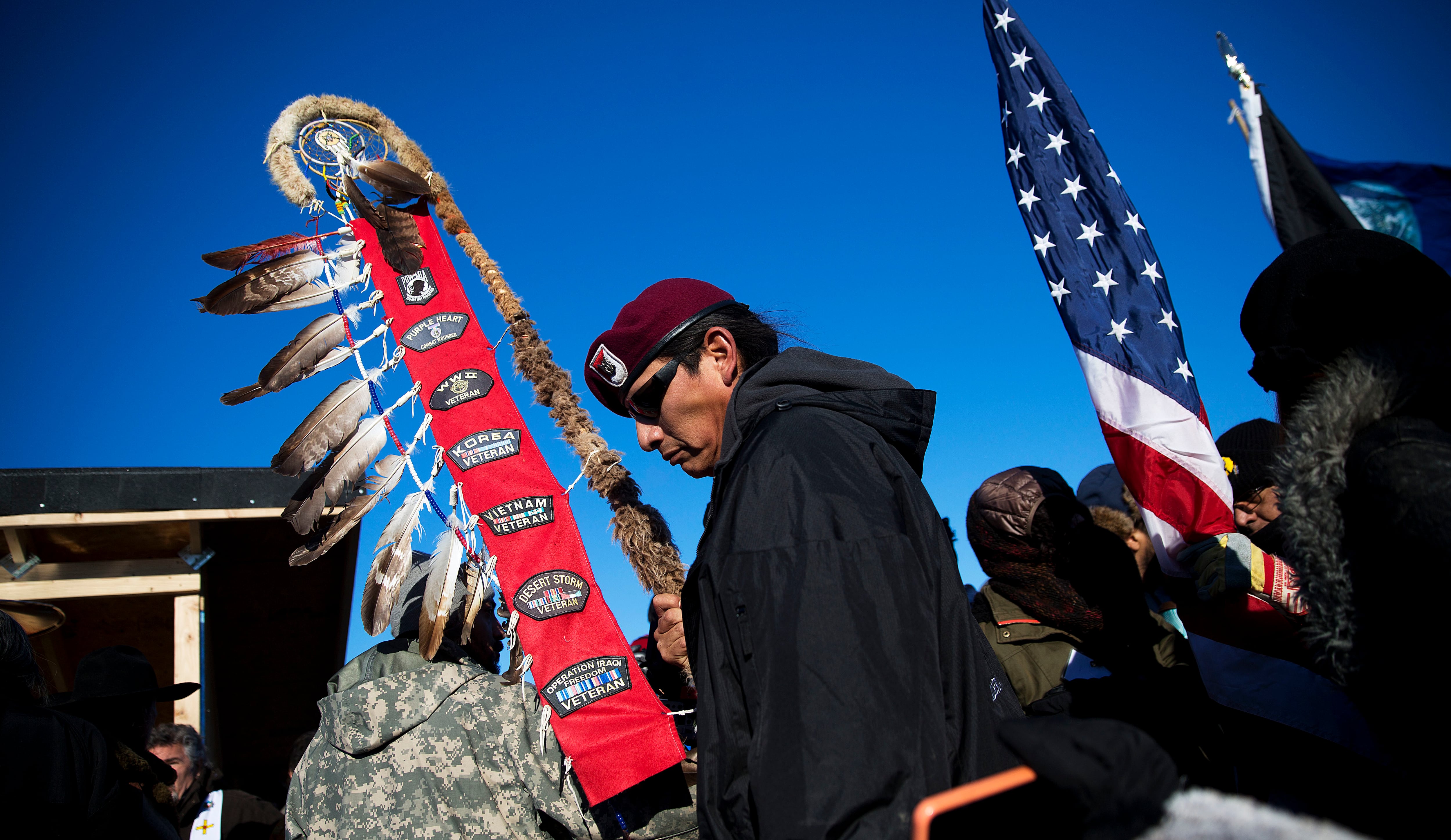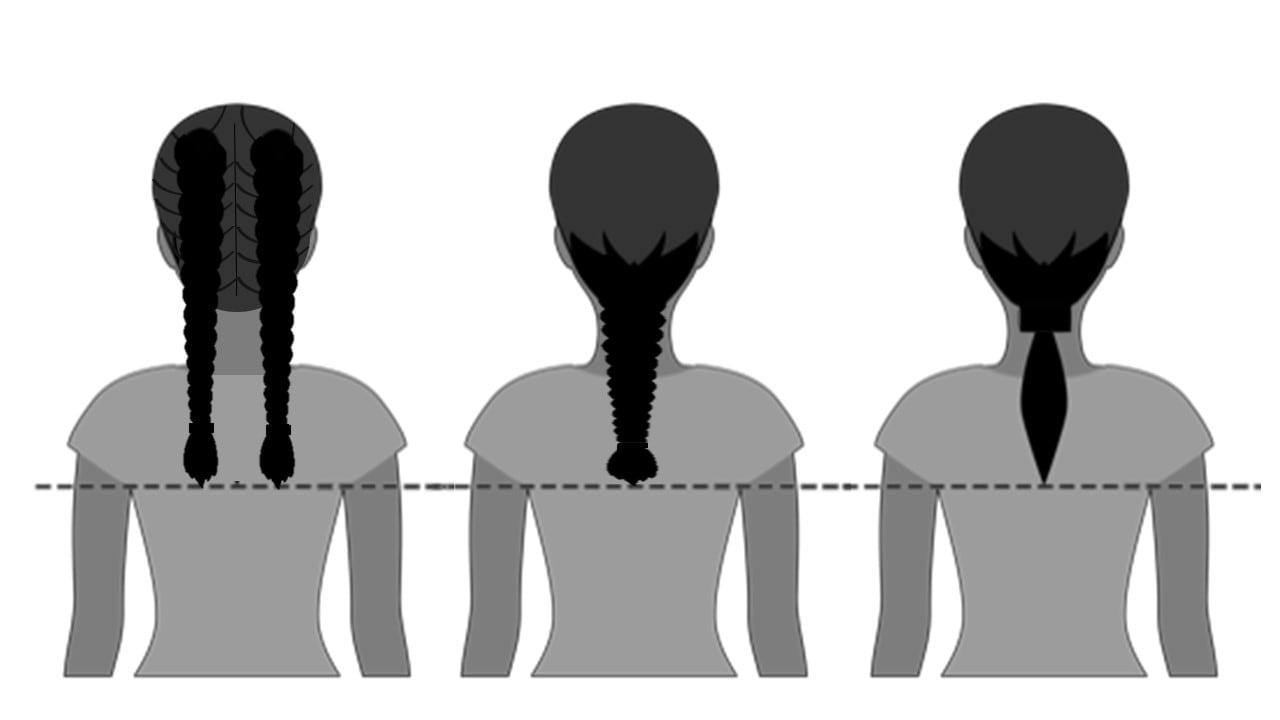Maj. Gen. Leah Lauderback could choose to dwell on the misery she carried through the “Don’t Ask, Don’t Tell” era, when she needed to hide her sexuality to stay in the military. Instead, the Space Force official wants to create a better future for those like her.
“I hid. I evaded questions. I was untruthful at times. … My private life and my relationships were stressed, and there was a lack of support for my family,” the Space Force’s intelligence, surveillance and reconnaissance director, told reporters Wednesday. “I now choose to focus on the light.”
Lauderback is a leader of the Air Force’s Lesbian, Gay, Bisexual, Transgender and Queer/Questioning Initiative Team (LIT), one of two task forces created in March to update military policies that still pose barriers to minority service members. She came out as gay in 1997 and married her wife in 2014.
The other, an Indigenous Nations Equality Team (INET), will handle the concerns of airmen and guardians of American Indian and Native Alaskan heritage. Col. Terrence Adams, deputy director for strategy, policy and assessment at Air Force headquarters and an airman of Cherokee and Creek Indian heritage, leads the INET.
RELATED

The groups plan to find issues that need resolving, recommend changes to Department of the Air Force leadership, educate others on the unique traditions and challenges in their communities, and offer support to members of those communities who are struggling.
In 2018, the federally funded think tank Rand Corp. reported that 5.3 percent of Air Force members identified as LGBT. Just 0.7 percent of active-duty Air Force and Space Force troops identify as American Indian or Native Alaskan, as well as 0.6 percent of civilian employees, according to the Air Force Personnel Center.
Ten years after the Pentagon policy of banning openly gay people from serving in the military was repealed in 2011, Lauderback said, “we decided that a barrier analysis working group was necessary to determine if our LGBTQ community was able to serve openly without fear.”
“More importantly, are they able to serve in an inclusive and welcoming environment?” she added.
The INET also wants to visit Native American reservations, colleges that serve their populations, and other areas the Air Force typically doesn’t reach to boost recruitment from Native communities.
Adams said his experience growing up in Alabama is a world removed from Native Americans who come from reservations.
“It is a story filled with hurt and pain, and when they come into the Air Force to serve their country, I want each one of them to feel like they can achieve anything that they want to achieve,” he said.
RELATED

Both are still gathering information from a grassroots network of participants who are suggesting possible problems to fix.
Lauderback floated ideas she thinks could be easier to accomplish: educating USAF medical professionals and counselors on health issues unique to the LGBTQ community, like if a uniformed parent is stressed about their child’s struggle to understand their gender identity.
She also suggested changing the “high-risk” health form for people seeking HIV-prevention medication to something more positive for getting treatment, rewording gendered language in cases like the “Mothers of Preschoolers” or “Dad 101” programs, and making further tweaks as needed to the Air Force’s new guidance on transgender troops.
For native populations, “We are going out and partnering with other organizations like the Society of American Indian Government Employees and the American Indian Science and Engineering Society,” Adams added, as well as commanders across the force.
They’ll try to handle policy change within the service before reaching out to higher levels for help, like the defense secretary’s office or Congress.
Air Force Chief of Staff Gen. Charles “CQ” Brown and Chief of Space Operations Gen. Jay Raymond support both of the groups and their push to make the lives of airmen and guardians easier, the task force leaders said. And in the digital era, social media helps crowdsource ideas for change and spread awareness of minority issues, Adams said.
RELATED

The Women’s Initiative Team, which has tackled issues affecting female airmen for about a decade, also offers a blueprint for success. That group was instrumental in the recent overhaul of women’s hair standards that now allow them to wear shoulder blade-length ponytails and braids.
“I learned to be bold from them, to be persistent and to be patient,” Adams said. “There are a lot of things they’ve done that took a lot of leadership, a lot of courage.”
The groups will look for ways to collaborate on problems that affect airmen who fall into multiple categories, such as a transgender female airman or a gay, native guardian.
Amid the social justice push that has followed the death of George Floyd, a Black man killed by a white police officer in Minnesota last year, Lauderback and Adams are optimistic that the time is ripe for improving the lives of members in their communities.
“Sometimes you need to light a fire to get things changed, or you want to illuminate the future,” Lauderback said. “Staying lit means that we plan to not burn out.”
Rachel Cohen is the editor of Air Force Times. She joined the publication as its senior reporter in March 2021. Her work has appeared in the Washington Post, the Frederick News-Post (Md.), Air and Space Forces Magazine, Inside Defense, Inside Health Policy and elsewhere.





